Kia Niro vs Renault Clio – Which car suits you better?
Two cars, one duel: Kia Niro meets Renault Clio.
Which one wins in performance, efficiency and value for money? Find out now!
Costs and Efficiency:
Looking at overall running costs, both models reveal some interesting differences in everyday economy.
Renault Clio has a convincingly advantage in terms of price – it starts at 16600 £, while the Kia Niro costs 29100 £. That’s a price difference of around 12549 £.
Fuel consumption also shows a difference: Kia Niro manages with 2.40 L and is therefore convincingly more efficient than the Renault Clio with 4.30 L. The difference is about 1.90 L per 100 km.
Engine and Performance:
Power, torque and acceleration are the classic benchmarks for car enthusiasts – and here, some clear differences start to show.
When it comes to engine power, the Kia Niro has a clearly perceptible edge – offering 180 HP compared to 143 HP. That’s roughly 37 HP more horsepower.
In acceleration from 0 to 100 km/h, the Renault Clio is barely noticeable quicker – completing the sprint in 9.30 s, while the Kia Niro takes 9.90 s. That’s about 0.60 s faster.
In terms of top speed, the Kia Niro performs slight better – reaching 185 km/h, while the Renault Clio tops out at 174 km/h. The difference is around 11 km/h.
There’s also a difference in torque: Kia Niro pulls clearly perceptible stronger with 265 Nm compared to 205 Nm. That’s about 60 Nm difference.
Space and Everyday Use:
Beyond pure performance, interior space and usability matter most in daily life. This is where you see which car is more practical and versatile.
Both vehicles offer seating for 5 people.
In curb weight, Renault Clio is distinct lighter – 1124 kg compared to 1474 kg. The difference is around 350 kg.
In terms of boot space, the Kia Niro offers to a small extent more room – 451 L compared to 391 L. That’s a difference of about 60 L.
In maximum load capacity, the Kia Niro performs clearly perceptible better – up to 1445 L, which is about 376 L more than the Renault Clio.
When it comes to payload, Kia Niro slightly takes the win – 466 kg compared to 406 kg. That’s a difference of about 60 kg.
Who comes out on top?
Overall, the Kia Niro shows itself to be outperforms in nearly all aspects and secures the title of DriveDuel Champion.
It convinces with the more balanced overall package and proves to be the more versatile choice for everyday use.
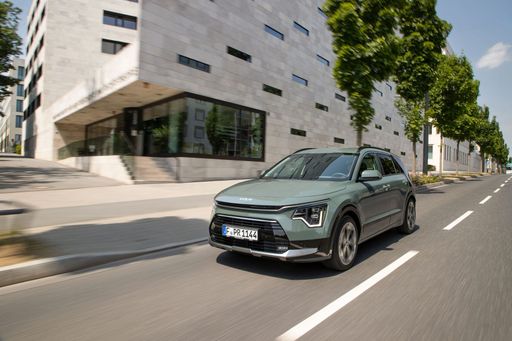
Kia Niro
Kia Niro
The Kia Niro presents itself as a versatile and eco-friendly SUV, blending a stylish design with advanced hybrid technology. Its spacious interior offers comfort and practicality, making it ideal for both city driving and longer journeys. With a focus on efficiency and sustainability, the Niro is a compelling choice for environmentally conscious drivers.
details @ press.kia.com
@ press.kia.com
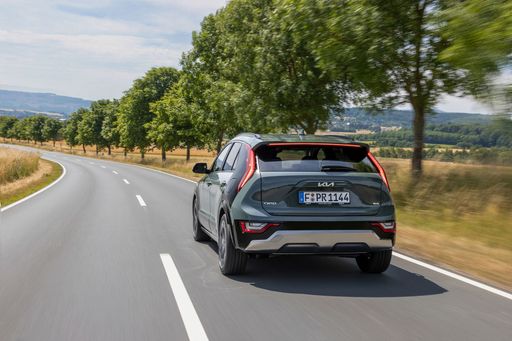 @ press.kia.com
@ press.kia.com
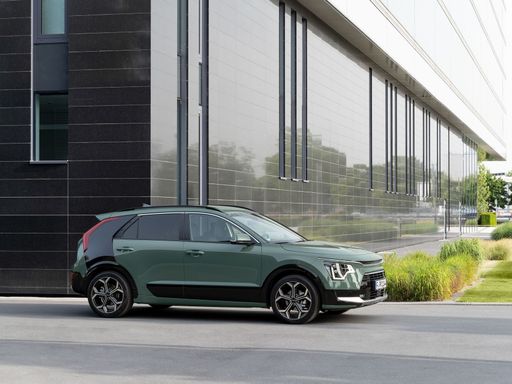 @ press.kia.com
@ press.kia.com
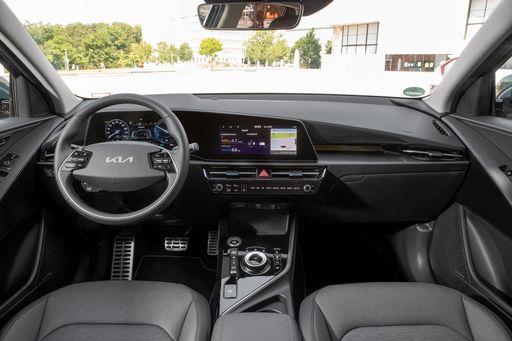 @ press.kia.com
@ press.kia.com
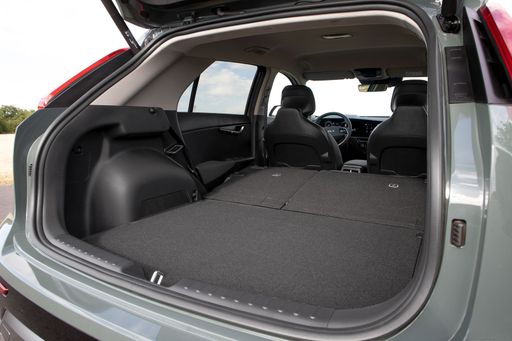 @ press.kia.com
@ press.kia.com
Renault Clio
The Renault Clio continues to impress with its sleek design and agile handling, making it a standout choice in the compact car segment. Inside, it offers a surprisingly spacious and comfortable cabin, crafted with high-quality materials that enhance the driving experience. Its fuel efficiency and reliable performance make it an attractive option for both city commuting and longer journeys.
details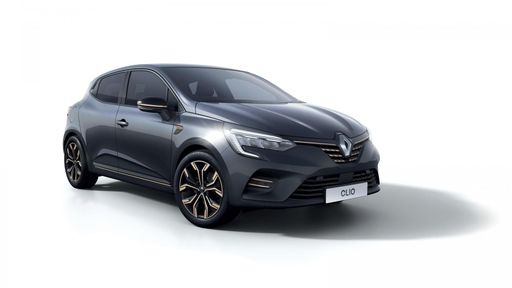 @ renault-presse.de
@ renault-presse.de
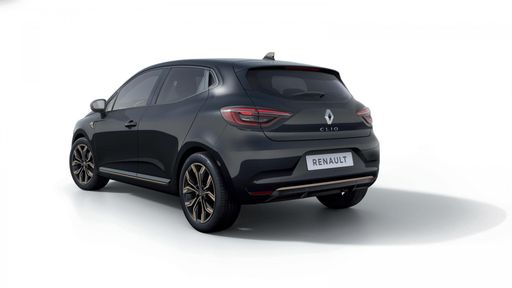 @ renault-presse.de
@ renault-presse.de
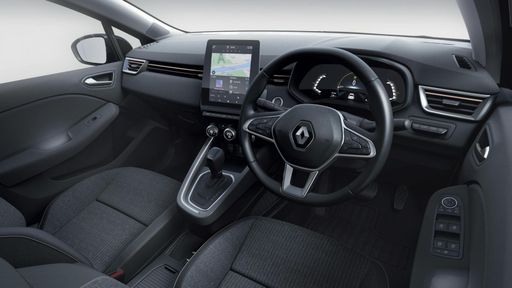 @ renault-presse.de
@ renault-presse.de

|

|
|
|
|
Costs and Consumption |
|
|---|---|
|
Price
29100 - 38600 £
|
Price
16600 - 23000 £
|
|
Consumption L/100km
2.4 - 4.9 L
|
Consumption L/100km
4.3 - 5.3 L
|
|
Consumption kWh/100km
-
|
Consumption kWh/100km
-
|
|
Electric Range
57 - 62 km
|
Electric Range
-
|
|
Battery Capacity
1.3 - 11.1 kWh
|
Battery Capacity
0.60 kWh
|
|
co2
53 - 111 g/km
|
co2
97 - 121 g/km
|
|
Fuel tank capacity
37 - 42 L
|
Fuel tank capacity
39 - 42 L
|
Dimensions and Body |
|
|---|---|
|
Body Type
SUV
|
Body Type
Hatchback
|
|
Seats
5
|
Seats
5
|
|
Doors
5
|
Doors
5
|
|
Curb weight
1474 - 1594 kg
|
Curb weight
1124 - 1331 kg
|
|
Trunk capacity
348 - 451 L
|
Trunk capacity
301 - 391 L
|
|
Length
4420 mm
|
Length
4053 mm
|
|
Width
1825 mm
|
Width
1798 mm
|
|
Height
1545 mm
|
Height
1440 mm
|
|
Max trunk capacity
1342 - 1445 L
|
Max trunk capacity
979 - 1069 L
|
|
Payload
466 kg
|
Payload
398 - 406 kg
|
Engine and Performance |
|
|---|---|
|
Engine Type
Full Hybrid, Plugin Hybrid
|
Engine Type
Full Hybrid, Petrol
|
|
Transmission
Automatic
|
Transmission
Automatic, Manuel
|
|
Transmission Detail
Dual-Clutch Automatic
|
Transmission Detail
Automatic Gearbox, Manual Gearbox
|
|
Drive Type
Front-Wheel Drive
|
Drive Type
Front-Wheel Drive
|
|
Power HP
138 - 180 HP
|
Power HP
67 - 143 HP
|
|
Acceleration 0-100km/h
9.9 - 11.4 s
|
Acceleration 0-100km/h
9.3 - 17.1 s
|
|
Max Speed
170 - 185 km/h
|
Max Speed
160 - 174 km/h
|
|
Torque
265 Nm
|
Torque
95 - 205 Nm
|
|
Number of Cylinders
4
|
Number of Cylinders
3 - 4
|
|
Power kW
102 - 132 kW
|
Power kW
49 - 105 kW
|
|
Engine capacity
1580 cm3
|
Engine capacity
999 - 1598 cm3
|
General |
|
|---|---|
|
Model Year
2025
|
Model Year
2023 - 2025
|
|
CO2 Efficiency Class
C, B
|
CO2 Efficiency Class
C, D
|
|
Brand
Kia
|
Brand
Renault
|
Is the Kia Niro offered with different drivetrains?
The Kia Niro is available as Front-Wheel Drive.
The prices and data displayed are estimates based on German list prices and may vary by country. This information is not legally binding.
